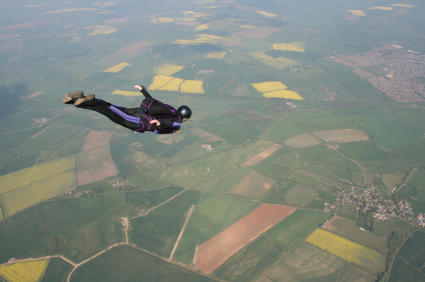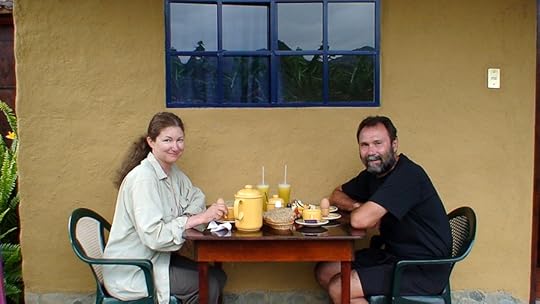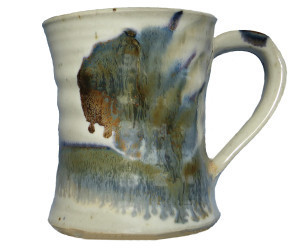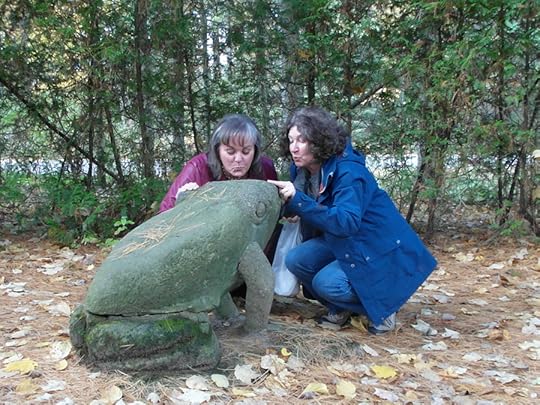Suzanne Stengl's Blog, page 12
March 3, 2015
Fourth Blogiversary
 I’ve been blogging weekly since March 5, 2011 and this is my 210th post. That’s four years of Tuesday Café blog posts.
I’ve been blogging weekly since March 5, 2011 and this is my 210th post. That’s four years of Tuesday Café blog posts.
My very first post was on a Saturday, but the second one was on a Tuesday. That’s why I started calling my blog Tuesday Café. I know that doesn’t make much sense, but I wanted a name—something other than “Suzanne’s Blog”—and there you have it.
Now I’ve decided I’m not going to be as structured. I’ll probably still blog weekly, but it doesn’t have to be on a Tuesday. And I’m renaming the blog, The Chimes Café—a name I got from a café in one of my Story Worlds.
Four years ago, I was only beginning this writing journey. I’ve learned a bit since then and I want to share some of that with you now.
Ten Things I’ve Learned Along The Way
1. Be committed
It’s not gonna happen magically. There are no elves that sit down at my keyboard and do it while I sleep. I need to show up. Ninety percent of anything is showing up. We’ve all heard the “10% inspiration, 90% perspiration” rule. So set some kind of schedule and stick to it.
2. Be realistic
I can’t commit to 12 hours a day, 7 days a week. It’s hard to commit to 2 hours a day, 5 days a week. Some weeks it’s just not going to happen. But that’s no reason to throw in the towel. I will keep coming back, until the current book is done. And then I will start the next one.
3. Be prepared
I know for sure that writing “The End” is only the beginning. Then there’s the editing, the proofing, the formatting, the cover choices, the quest for reviews. All of it takes longer than you thought it would.
4. Stay hydrated
Having water bottles in the middle of the hall reminds me to take sips all day long.
 5. Stay flexible
5. Stay flexible
Do a cobra stretch every hour to avoid Hunched-Over-Keyboard Syndrome.
6. Treat yourself
Have a cupcake. Have a cupcake with a candle on it. Celebrate something. Every one thousand words needs a cupcake.
7. Have a writing buddy
Report your word count daily. This does not have to be elaborate. Keep it simple. Something like this:
Subject line: report
Body of email: 129 words
 8. Go for long walks, alone
8. Go for long walks, alone
Give the muse a break.
Breathe in the fresh air.
If it’s raining, carry an umbrella.
If the sidewalks are icy where you live, go skiing.
9. Have fun
Sure, writing is a business, but it needs to be fun if you’re going to stay in it for the long haul. If you don’t enjoy those long, lonely hours at the keyboard, do something else. Take up knitting, or learn French, or try skydiving.
 10. Begin
10. Begin
It takes a long time to learn the Craft, and you’ll always be learning it. Part of the learning is the apprenticeship. You learn by doing.
Many writers think they need to read one more craft book, need to take one more course. But reading craft books does not equal writing. You’re already good enough. Start writing. Practice. It’s not set in stone. It can always be edited later.
Do you have any writing tips you’d like to pass along?
What do you think of The Chimes Café for a blog name?
Do you like cupcakes? With candles?
Do you let your candles burn all the way down to the icing?
Cupcake from iStockphoto.com #000012620129
keyboard from iStockphoto.com #000007155263
water bottle from iStockphoto.com #000007155263
yoga cobra from bigstockphoto.com #7947064
lots of cupcakes from photos.com #114302447
long walk from photos.com #137398544
skydiving from iStockphoto.com #000016403632
pen from iStockphoto.com #000014549265
The post Fourth Blogiversary appeared first on Suzanne Stengl.
February 24, 2015
Cuenca to Vilcabamba
For my blog post this week, I want to return to Ecuador. Last time, I told you about The Eleven Hour Bus Trip. Now it is time to leave Cuenca and go to Vilcabamba.
For the rest of the Ecuador story, go here.

poinsettia tree in Vilcabamba
The bus ride from Cuenca to Vilcabamba was a little better because I got the front seat, right by the door to the driver’s cabin. There was a blue curtain across the door, but I kept pulling it back whenever people got on or off.
Besides the driver, there was one other ‘helper’ up there, and sometimes there were two helpers. Keeping my eyes on the horizon was good—I was not as nauseated. The helper seemed a little nervous about me being able to see him. I figured out that half the reason the bus wound so much was because the driver was avoiding potholes, like Hans Solo avoiding asteroids. At one point, one of the helpers moved the curtain over a bit more to block my view, but Rolf could still see the driver, who was eating fried chicken—with both hands—while one of the helpers was reaching across and steering.
This trip was only five hours long. There were no bathroom breaks and my bladder had lost all tone by the time we arrived in Loja. We had a bit of food at the bus station and waited for the connecting bus to Vilcabamba. This last leg of the journey only took an hour and a half.

Suzanne and Rolf in Vilcabamba
Our hotel is owned and run by a French couple. Everything works and is ultra clean. We look out on a garden and there is a hammock on our porch. Breakfast is served on the table outside our door—juice, tea/coffee, egg, fruit salad and homemade multigrain bread.
 I think I’m going to like it here . . .
I think I’m going to like it here . . .
The post Cuenca to Vilcabamba appeared first on Suzanne Stengl.
February 17, 2015
A New Book, A New Mug
 Every time I write a new book, I get myself a new mug.
Every time I write a new book, I get myself a new mug.
Each book will involve numerous cups of coffee or tea and it’s important to have the right mug to humour the Muse.
This is the current mug. I got it while I was visiting Ontario last October at a pottery place called Pinecroft.
The Muse also enjoys teatime at Pinecroft. And walking around the grounds.
And walking around the grounds. Admiring the leaves is also very useful for inspiration.
Admiring the leaves is also very useful for inspiration. Kissing the frog has been known to help the Muse.
Kissing the frog has been known to help the Muse. But the surest way to inspire the Muse is tea with friends.
But the surest way to inspire the Muse is tea with friends. With this new mug and all the inspiration attached to it, the new book should be out by October. Wish me luck!
With this new mug and all the inspiration attached to it, the new book should be out by October. Wish me luck!
The post A New Book, A New Mug appeared first on Suzanne Stengl.
February 10, 2015
Valentine’s Day Memories
 I grew up in rural southwestern Ontario. Until the end of Grade 5, I went to school at Puddleford, otherwise known as S.S. #14 Howard—a one-room elementary school which taught all eight grades.
I grew up in rural southwestern Ontario. Until the end of Grade 5, I went to school at Puddleford, otherwise known as S.S. #14 Howard—a one-room elementary school which taught all eight grades.
In early February, the Valentine’s Box sat on the teacher’s desk. The teacher covered a large cardboard box with red construction paper and decorated it with paper doily “lace” hearts. There was a slot on top to drop in the Valentines.
Tradition dictated that you give everyone a Valentine so no one was left out. Since the enrollment was only ever about 20 students, it did not mean a lot of Valentines were needed.
 Every February my mother bought a “book” of Valentines and my brothers and sisters and I spent a lot of time cutting out the little cards. The book came with pages of envelopes that also needed to be cut out along the dotted lines, folded, and glued with mucilage.
Every February my mother bought a “book” of Valentines and my brothers and sisters and I spent a lot of time cutting out the little cards. The book came with pages of envelopes that also needed to be cut out along the dotted lines, folded, and glued with mucilage. 
We signed the cards, put them in the sometimes unevenly made envelopes, addressed them and brought them to school. Everyone stuffed their Valentines in the box. A couple of the older children sorted and distributed the cards.
That afternoon we brought home the Valentines we’d received and counted how many were the same. There were a lot of duplicates, since most of the Valentine books had been bought at the one general store in the nearby town.
Did you remember Valentine books in grade school? Were you able to make envelopes with nice square corners? Do you know what mucilage is?
Heart from bigstockphoto.com #39232588
Scissors from bigstockphoto.com #47364538
Mucilage from old craft box
The post Valentine’s Day Memories appeared first on Suzanne Stengl.
February 3, 2015
Groundhogs and Chinooks

hoary marmot
Yesterday was Groundhog Day. On February 2, the little guy wakes from his hibernation and ventures out of his burrow to check out the world. Legend tells us that if he sees his shadow, he is frightened and rushes back into his burrow to sleep for another six weeks. And it means we will have six more weeks of winter.
Yesterday, however, was cloudy and snowing and minus 15 Celsius, so there was no shadow for the groundhog to see.
Actually, in Calgary, we call them marmots. The groundhog is one of 14 species of marmots, the largest members of the squirrel family. While the groundhog is a lowland creature, the hoary marmot lives in mountainous areas. In Calgary we tend to rely on the hoary marmot for the weather prediction.
Also yesterday, on Groundhog Day, my son and his wife were waiting out a blizzard at the airport in Kamloops, BC. One plane had circled the airport for a time, and then had to go back to Vancouver. Their flight was two hours late but they made it home to Calgary. Except for needing to be back at work, it might have been nice to have all that fresh snow and another ski day.
I don’t know what to think of the groundhog’s prediction. Or the marmot’s. Six more weeks of winter is what we get anyway. In Calgary, it sometimes snows in June. We’ve had heaps of hail in July. And September often has an early snowfall. In fact, you could say, we have 9 months of winter and 3 months of poor skiing.
The other thing Calgary has is the Chinook.
The Chinook is caused by the wet winds coming from the Pacific, cooling as they rise over the Rockies (dumping snow where we ski) and then dipping down the eastern side of the mountains as a warm, dry wind. The temperature can fluctuate from minus 15 to plus 15 in an hour.
So while we thank the little groundhog for his announcement of an early spring, it doesn’t make too much difference to Calgary. Right now it’s minus 16 and snowing lightly. Tomorrow it’s clear and above zero. And all that snow is dumping in the mountains to the west of us. Notice how this forecast bounces around. Do you live in the Chinook belt? Do you appreciate the spring-like temperatures in February? Or would you prefer a more even winter without all the melting and muck brought on by the warm winds?
Do you live in the Chinook belt? Do you appreciate the spring-like temperatures in February? Or would you prefer a more even winter without all the melting and muck brought on by the warm winds?
hoary marmot from bigstockphoto.com #78326726
The post Groundhogs and Chinooks appeared first on Suzanne Stengl.
January 27, 2015
Sunshine Village Aussie Day
 Yesterday we were skiing at Sunshine Village in Banff, Alberta, Canada. The snow was good. The temperature was mild. And the sun was out for most of the day with only a few cloudy stretches. As an added bonus, it turned out to be “Aussie Day”.
Yesterday we were skiing at Sunshine Village in Banff, Alberta, Canada. The snow was good. The temperature was mild. And the sun was out for most of the day with only a few cloudy stretches. As an added bonus, it turned out to be “Aussie Day”.
We boarded the high-speed 8 passenger gondola here, at the Bourgeau Parking lot. The trip takes about 18 minutes to go up 1,640 feet to the upper Village, which is at an elevation of 5,440 feet.
The trip takes about 18 minutes to go up 1,640 feet to the upper Village, which is at an elevation of 5,440 feet. As we stepped off the gondola we saw this sign:
As we stepped off the gondola we saw this sign: Australia Day, January 26, is the official national day of Australia. Sunshine Village staff are from many different countries. As well as Canadians, there are young people from the UK, Europe, Australia and New Zealand.
Australia Day, January 26, is the official national day of Australia. Sunshine Village staff are from many different countries. As well as Canadians, there are young people from the UK, Europe, Australia and New Zealand.
As part of the festivities for Aussie Day, there is a parade down Strawberry. We didn’t catch the parade, but we saw several costumed skiers on different trails. And since much of the Australian Aussie Day is celebrated at beaches down under, we saw a few Aussies skiing in T-shirts. A few brave fellows were shirtless. Fortunately for them, the temperature hovered around minus 1 to plus 1 Celsius. It’s usually much, much colder in January.
This is a view of the Village from the Strawberry Face. This is a view of Goat’s Eye Mountain from about the middle of Mount Standish.
This is a view of Goat’s Eye Mountain from about the middle of Mount Standish. This is the high speed quad, the Great Divide Express, at the top of Lookout Mountain, an elevation of 8,954 feet.
This is the high speed quad, the Great Divide Express, at the top of Lookout Mountain, an elevation of 8,954 feet.  And this is a healthy lunch:
And this is a healthy lunch:
bread pudding and ice cream, served at the Chimney Corner Lounge. I hope all of our visiting Aussies had a good time on their day!
I hope all of our visiting Aussies had a good time on their day!
The post Sunshine Village Aussie Day appeared first on Suzanne Stengl.
January 20, 2015
The Stages of Exercise
 After almost a month of fighting this flu, I am feeling ready to start exercising again. Before Christmas I had a routine of Yoga and Aquafit. I was also going to physiotherapy to deal with an old SI joint injury. That was tricky because I couldn’t tell what was a joint issue and what were plain old aches and pains from this endless flu.
After almost a month of fighting this flu, I am feeling ready to start exercising again. Before Christmas I had a routine of Yoga and Aquafit. I was also going to physiotherapy to deal with an old SI joint injury. That was tricky because I couldn’t tell what was a joint issue and what were plain old aches and pains from this endless flu.
Now it’s time to get back to fitness. If you are newly setting up a fitness routine, you might like to know that there are “stages” involved.
Pre-contemplation – This is kind of like denial. As in, “Maybe exercising would be a good idea, but I’m not sure.”
Contemplation – OK. We’ve got a problem. We need to do something about it.
Preparation – This is the research phase. People sometimes skip this step and jump right to . . .
Action – Now you’re doing something. This could get you to . . .
Maintenance – Or it could get you to . . .
Relapse – Otherwise known as Throwing in the Towel.
If this happens, you go back to Stage 3 – Preparation. If walking is the activity, maybe a kilometre is the goal for a few weeks. But first, you have to get back to No Pain.
Some people decide to run, and develop shin splints. Then they must gear down to walking, until there is no more pain.
A typical plan might be:
Walk 10 laps at the gym (1 km).
The next week, run a half lap, and walk the other 9 ½ laps.
The next week, add another half lap, and so on, until you are running half a lap and walking half a lap.
Then start running a whole lap until you can run the whole kilometre.
And then, do more Preparation.
You just need to give yourself time and stay with it.
Have you got an exercise routine? If not, are you contemplating one?
shoes from bigstockphoto.com #42724783
The post The Stages of Exercise appeared first on Suzanne Stengl.
January 13, 2015
Writing Down The Bones
 This is one of my favourite books on writing. I bought this copy in 1995. It was originally published in 1986 and there are updated versions since then. It’s the kind of book you reread and reread.
This is one of my favourite books on writing. I bought this copy in 1995. It was originally published in 1986 and there are updated versions since then. It’s the kind of book you reread and reread.
In WRITING DOWN THE BONES, Natalie Goldberg has presented the work as a series of vignettes, each two or three pages long. Some are only a half page. They are all powerful and concise. Whenever I need motivation for my writing, I randomly flip open the book and listen to what she has to say. Sometimes I get lost in her essays for an hour or more. Sometimes I do the exercises she suggests. I always close the book feeling inspired.
In an earlier blog entry, I describe one of her writing exercises here.
Some of the chapters I have circled in the Table of Contents are
First Thoughts
Living Twice
Writing Is Not a McDonald’s Hamburger
Blue Lipstick and a Cigarette Hanging Out Your Mouth
One Plus One Equals a Mercedes-Benz
I’ve underlined and stick-it noted my way through the pages and I don’t lend this book to anyone. If you’d like your own copy, you can most likely find it at your library or buy it here.
Now, I’m going to make a cup of tea and get lost in this book for the rest of the afternoon.
The post Writing Down The Bones appeared first on Suzanne Stengl.
January 6, 2015
My Winter Tires
 I love my new Michelin X-Ice winter tires.
I love my new Michelin X-Ice winter tires.
A lot of winter drivers still believe that the cost of dedicated winter tires is prohibitive and that all-season tires are good enough for winter conditions in their area.
Studies done by the Traffic Injury Research Foundation show:
“that the more resilient compound of winter tires is beneficial when the air temperature is +7 degrees Celsius or lower, regardless of whether the roads are dry, wet, snow-covered or icy. While most jurisdictions may receive variable amounts of snow, a majority of Canadians experience temperatures of at least -10 degrees Celsius or colder” explains Dr. Vanlaar. “Even in moderate temperatures above 0 degrees winter tires improve your car’s traction, cornering and braking ability. Also, anti-lock braking systems (ABS) and electronic stability control (ESC) require sufficient traction to be effective and winter tires can provide that needed traction.”
Here’s a video that shows the comparison between all-seasons and dedicated winter tires.
Yes, there is the initial expense of the winter tires but collisions can cost a lot more. As well, some research suggests there is fuel savings of about 5% with the use of winter tires. Also, your insurance costs are generally less when you’re using winter tires.
I’m so happy that our “ditch-seeking” all-season tires are stored in the garage this winter.
It’s cold in Alberta. For the last few days, Environment Canada has been issuing Extreme Cold Warnings.
An Extreme Cold Warning is issued when there will be very cold temperatures or wind chill creating an elevated risk to health such as frost bite and hypothermia. The alert is triggered when there will be 2 hours of minus 40 temperature or wind chill.
Today they are predicting a balmy minus 16, with a wind chill of minus 26.
A few years ago, I posted my Official Canadian Temperature Conversion Chart but in case you missed it, it’s here.
Is it cold where you live? Drive safe and stay warm!
image from bigstockphoto.com #52849951
The post My Winter Tires appeared first on Suzanne Stengl.
December 30, 2014
Fast away the old year passes . . .
 Two days until the New Year and I need to get over this December flu. I feel like I’ve been sick off and on all month but I think I’m almost better. Now is the time to focus on lots of fluids, lots of fresh fruit and making time to get outside for some fresh air.
Two days until the New Year and I need to get over this December flu. I feel like I’ve been sick off and on all month but I think I’m almost better. Now is the time to focus on lots of fluids, lots of fresh fruit and making time to get outside for some fresh air.
I hope you have managed to avoid the flu this season. And if not, hopefully, the New Year will see us all in better health.
Teddy bear from bigstockphoto.com #70568188
The post Fast away the old year passes . . . appeared first on Suzanne Stengl.



